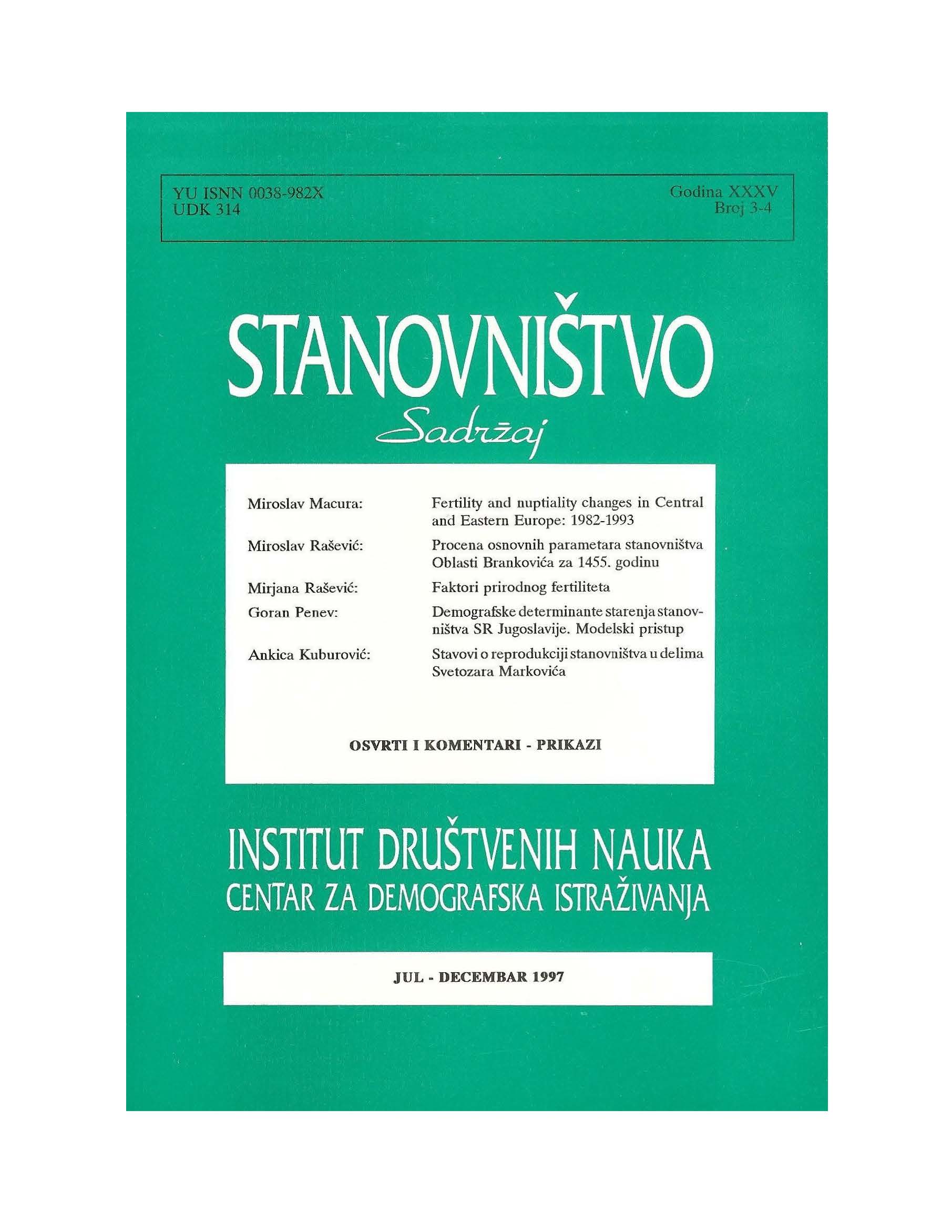Factors Affecting Natural Fertility
Main Article Content
Abstract
Formally speaking, natural potential to bear children is substantial. Since normal pregnancy lasts nine months, a potentially fertile woman could theoretically give birth to at least one child per year which is 35 children during her reproductive period limited from approximately 15 to 50 years of age. However, in populations which, as a rule, do not exercise control of the natural potential, the average number of live births per a woman is by far lower. Most often it is about 6 to 7 children per woman. The paper represents a review of the origins of the difference between the theoretical, formally formulated framework for child bearing, and the actual child bearing in conditions in which it is not controlled. Against such background is set the Lorimer's (1954) analysis of the average procreative capacity of the non-contraceptive population enjoying "relatively favourable living conditions" in which an emphasis is placed on biological factors. In addition, in view of the fact that the estimate of the average procreative capacity depends to a large measure on the reliability of the adopted assumptions regarding effective probability of fertile women to conceive in the course of one calendar year, a number of models is presented regarding probability of conception. Besides, a note is taken of Bongaarts (1993) research regarding relative contribution of various factors to the level of natural fertility which has pointed to the significance of an individual's behaviour factors. Discussion of the natural basis for child bearing has fully emphasized the complexity and significance of the issue. The latest research has thrown additional light on the earlier conceptions and assumptions. This particularly refers to the significance of an individual's behaviour as determinant of the natural fertility of population. Proofs of the significance of individual behaviour as determinants of natural fertility do not assume family planning as an individual's life style but place an emphasis on the role of social norms, moral codex, legal arrangements and social awareness which affect and control decisions of men and women regarding family planning and child bearing in populations in which fertility is not checked on purpose. At the same time, these proofs represent a direct response to the question regarding major differences in genetic potential for child bearing between different populations. The conclusion that the biological factors have a limited impact on the natural fertility indicates that even if these differences do exist, they are not large enough to affect the level of child bearing in populations which do not practice fertility control. Consequently, their impact in populations which widely practice population control is even less significant.
Downloads
Article Details

This work is licensed under a Creative Commons Attribution-NonCommercial 4.0 International License.
Published by the Institute of Social Sciences - Center for Demographic Research





